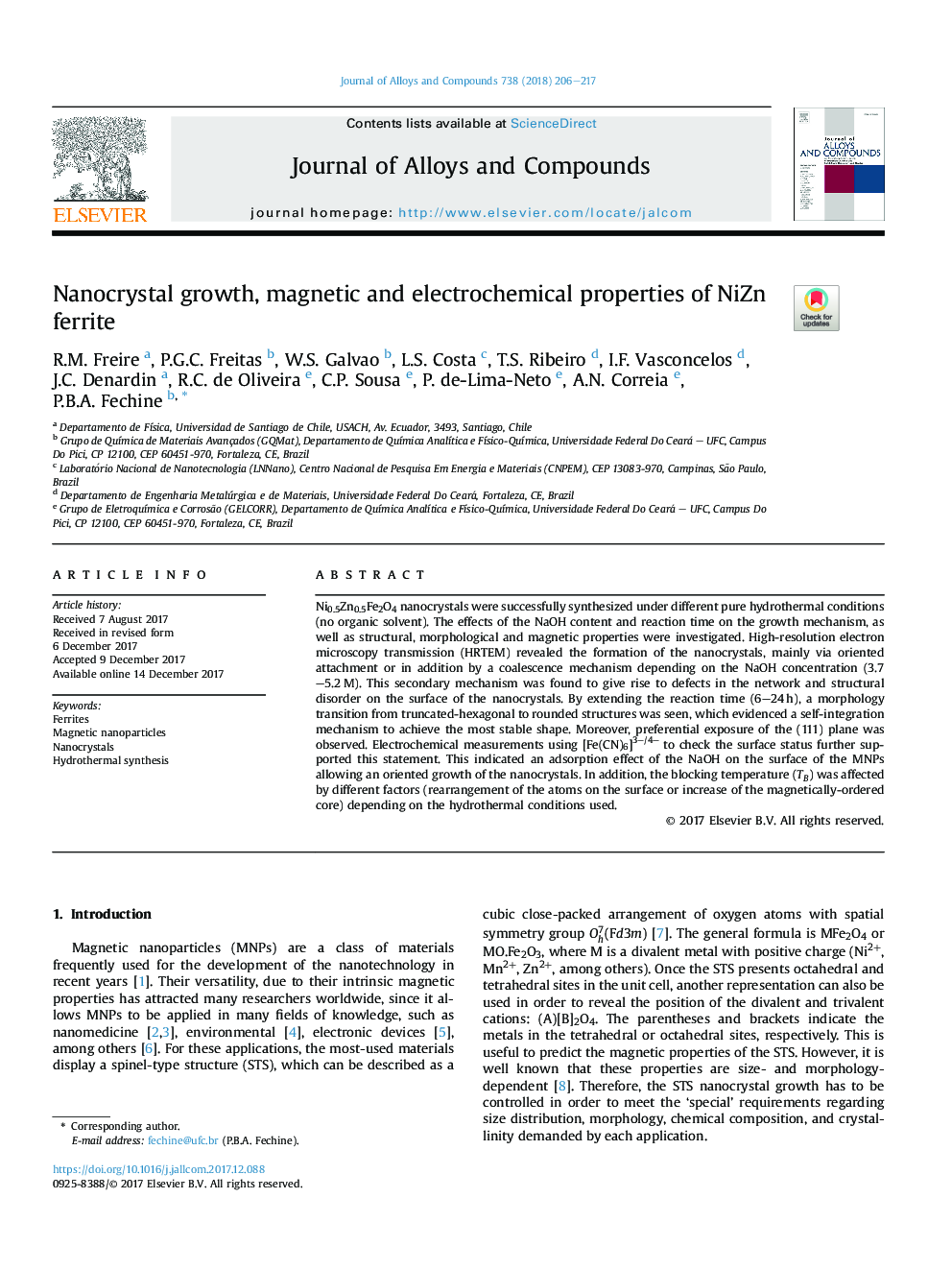| Article ID | Journal | Published Year | Pages | File Type |
|---|---|---|---|---|
| 7994005 | Journal of Alloys and Compounds | 2018 | 12 Pages |
Abstract
Ni0.5Zn0.5Fe2O4 nanocrystals were successfully synthesized under different pure hydrothermal conditions (no organic solvent). The effects of the NaOH content and reaction time on the growth mechanism, as well as structural, morphological and magnetic properties were investigated. High-resolution electron microscopy transmission (HRTEM) revealed the formation of the nanocrystals, mainly via oriented attachment or in addition by a coalescence mechanism depending on the NaOH concentration (3.7-5.2â¯M). This secondary mechanism was found to give rise to defects in the network and structural disorder on the surface of the nanocrystals. By extending the reaction time (6-24â¯h), a morphology transition from truncated-hexagonal to rounded structures was seen, which evidenced a self-integration mechanism to achieve the most stable shape. Moreover, preferential exposure of the (111) plane was observed. Electrochemical measurements using [Fe(CN)6]3â/4â to check the surface status further supported this statement. This indicated an adsorption effect of the NaOH on the surface of the MNPs allowing an oriented growth of the nanocrystals. In addition, the blocking temperature (TB) was affected by different factors (rearrangement of the atoms on the surface or increase of the magnetically-ordered core) depending on the hydrothermal conditions used.
Related Topics
Physical Sciences and Engineering
Materials Science
Metals and Alloys
Authors
R.M. Freire, P.G.C. Freitas, W.S. Galvao, L.S. Costa, T.S. Ribeiro, I.F. Vasconcelos, J.C. Denardin, R.C. de Oliveira, C.P. Sousa, P. de-Lima-Neto, A.N. Correia, P.B.A. Fechine,
